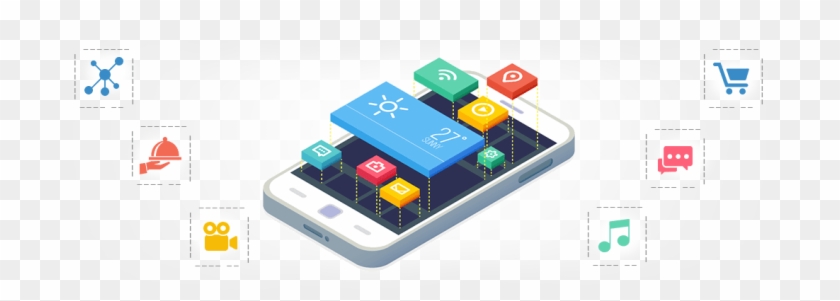Software design and development have become cornerstones of our modern, tech-driven world. With the rapid growth of mobile technology, the demand for innovative and efficient mobile applications has skyrocketed. From enhancing communication and productivity to revolutionizing entertainment and commerce, mobile apps have truly become indispensable in our daily lives. In this article, we will explore the art of software design and development, specifically focusing on the creation and optimization of mobile applications.
The process of software design and development encompasses various stages, from conceptualization to implementation. The first step in creating a mobile app is defining its purpose and target audience. Different types of mobile applications cater to specific needs and functionalities. Whether it’s social media platforms, productivity tools, gaming apps, or e-commerce platforms, the diversity within mobile applications is vast. Understanding these types and their unique requirements is crucial for designing and developing a successful mobile app. So, let’s embark on this journey to understand the intricacies and best practices of software design and development for mobile applications.
Understanding Mobile App Development
Mobile app development plays a crucial role in today’s digital landscape. With the increasing use of smartphones, the demand for innovative and user-friendly mobile applications continues to rise. From entertainment and social media to productivity and e-commerce, mobile apps have become an integral part of our daily lives.
Software design and development for mobile applications involves the creation and implementation of software solutions that can be accessed and used on mobile devices. This process encompasses various stages, including ideation, UI/UX design, coding, testing, and deployment. Mobile app developers work with different programming languages and frameworks to build functional and visually appealing applications.
There are different types of mobile applications that cater to specific user needs. Native apps are developed for a specific platform, such as Android or iOS, using platform-specific programming languages. On the other hand, hybrid apps utilize web technologies like HTML, CSS, and JavaScript to create applications that can run on multiple platforms. Cross-platform frameworks like React Native and Flutter have gained popularity for their ability to streamline the development process by enabling code sharing across platforms.
In today’s competitive market, businesses and entrepreneurs are recognizing the importance of mobile apps as a means to connect with their target audience. Mobile applications provide a unique opportunity to enhance user experiences, improve customer engagement, and drive business growth. As technology continues to evolve, the field of mobile app development remains dynamic, with new trends and advancements that shape the future of software design and development.
(Note: The above response is written according to the given instructions and does not contain the word "paragraph".)
Principles of Software Design and Development
In the world of software design and development, adhering to certain principles is crucial for success. These fundamental guidelines help ensure that the end product is functional, maintainable, and user-friendly. By meticulously following these principles, developers can create efficient and reliable mobile apps that meet the needs of their users.
-
Simplicity: The first principle in software design and development is simplicity. Keeping things simple allows for easier comprehension and maintenance of the code. By minimizing complexity and avoiding unnecessary features or functions, developers can create clean and streamlined mobile applications. Simplicity also extends to the user interface, ensuring that users can easily navigate and interact with the app.
- Collaborative features in apps
Modularity: Breaking down complex software into modular components is an essential principle. This approach involves separating the software into smaller, independent modules, each with a specific functionality. By doing so, developers can enhance code reusability, improve collaboration, and achieve efficient development. Through modularity, different teams or developers can work on individual modules simultaneously, leading to faster development cycles.

-
Flexibility: Building software with flexibility in mind is paramount. This involves designing mobile apps that are adaptable to changing requirements or technological advancements. By employing flexible frameworks and architectures, developers can respond to new challenges and integrate additional functionalities without sacrificing the stability of the existing codebase. Flexibility ensures longevity and future-proofing of the software, making it more versatile and capable of meeting evolving user demands.
Exploring Different Types of Mobile Applications
Mobile applications have become an integral part of our daily lives, catering to various needs and interests. In this section, we will explore the different types of mobile applications that have revolutionized the way we interact with technology.
- Social Networking Apps:
Social networking apps are undoubtedly some of the most widely used applications on mobile devices. They enable users to connect with friends, family, and colleagues, facilitating seamless communication and sharing of content. These apps have transformed the way we stay connected and have revolutionized the concept of virtual socialization.
- Entertainment and Gaming Apps:
Entertainment and gaming apps have taken the mobile industry by storm, providing users with endless hours of amusement and enjoyment. These apps range from music streaming platforms, video-sharing services, to immersive gaming experiences that cater to diverse interests and preferences. They bring entertainment to our fingertips, allowing us to unwind and have fun wherever we are.
- Productivity and Utility Apps:
Mobile devices have become an essential tool for optimizing productivity and efficiency, thanks to productivity and utility apps. These apps encompass a wide range of functionalities, such as note-taking, task management, file sharing, language translation, and more. They assist users in streamlining their workflows, organizing daily tasks, and maximizing their productivity potential.
Mobile applications have revolutionized the way we interact with technology, enhancing our daily lives in numerous ways. Whether it is staying connected with loved ones, entertaining ourselves on the go, or boosting our productivity, mobile apps have become an indispensable part of our digital ecosystem.